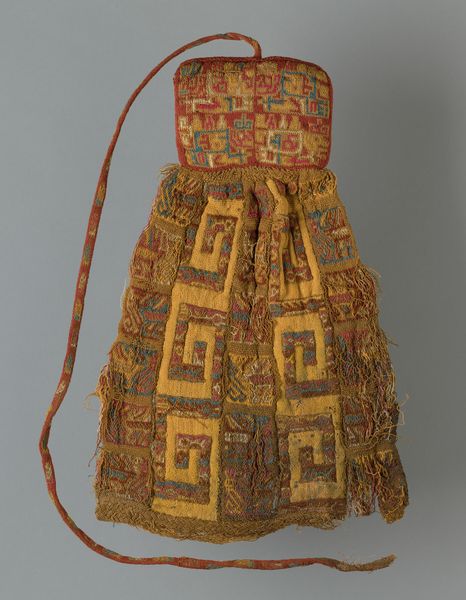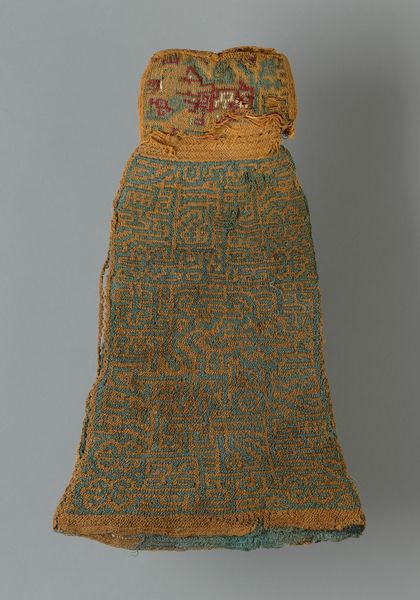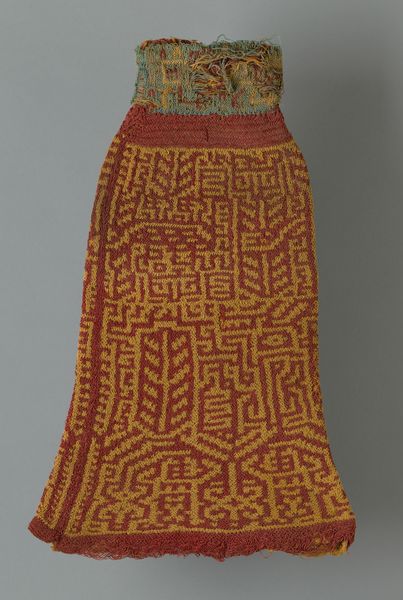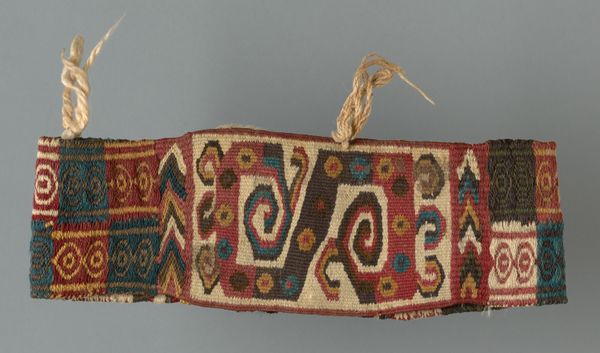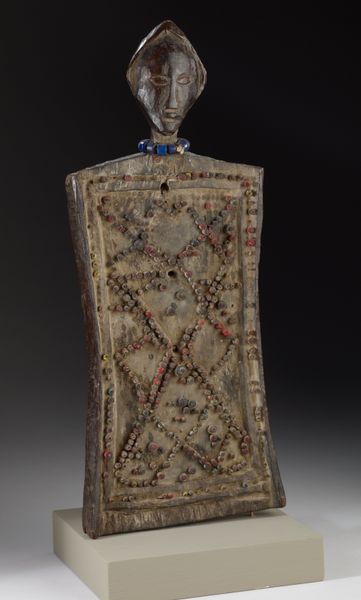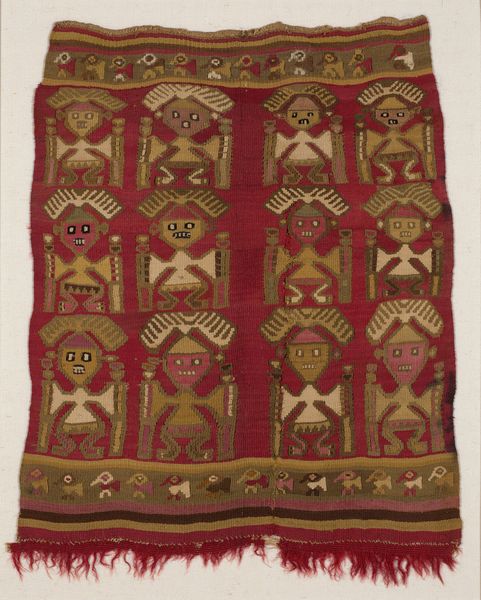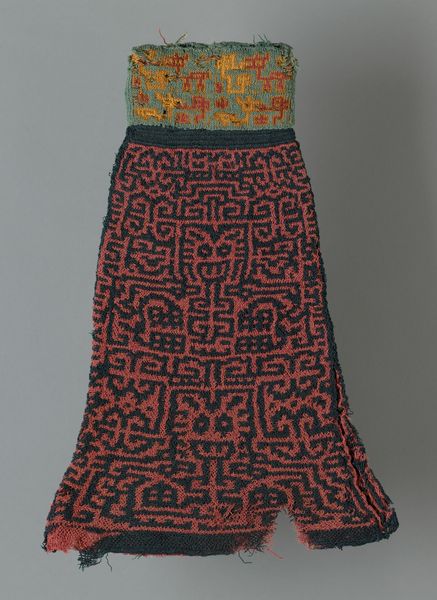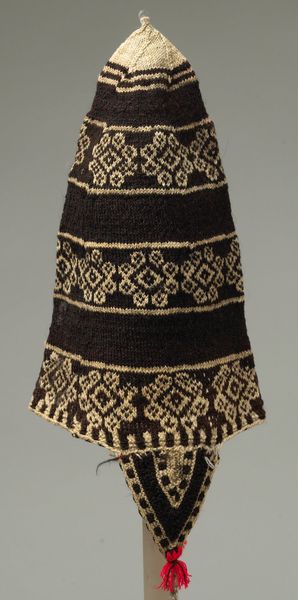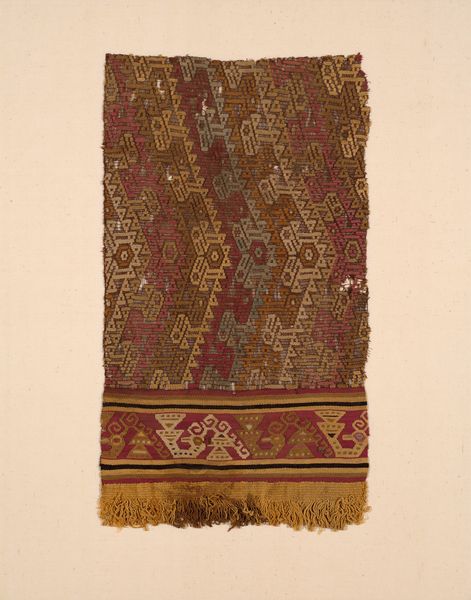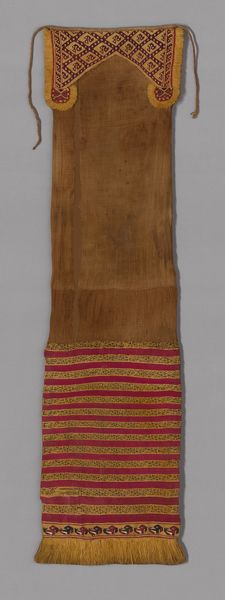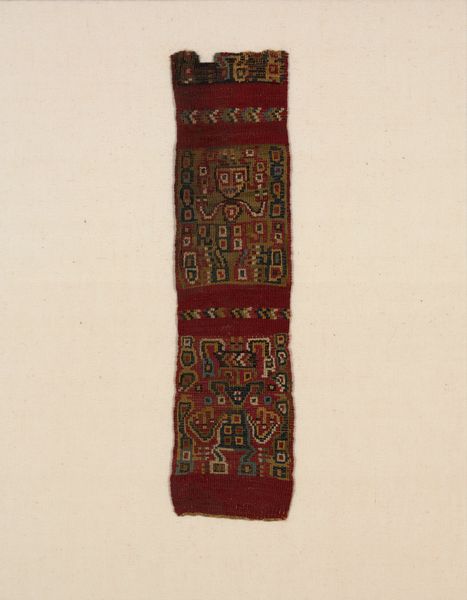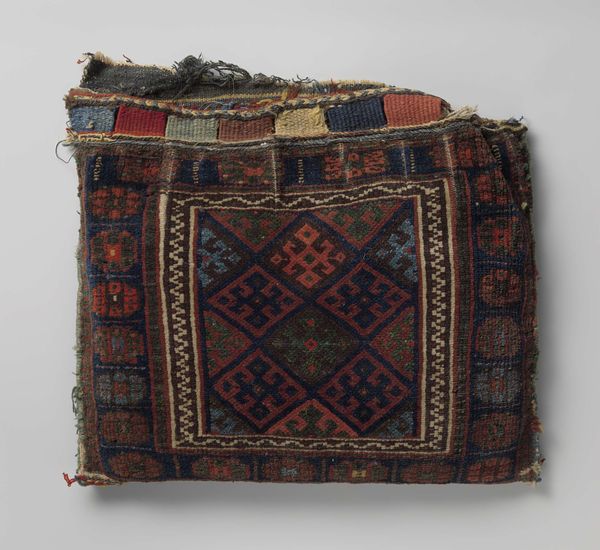
weaving, textile
#
pattern
#
weaving
#
textile
#
geometric
#
indigenous-americas
Dimensions: 33.7 × 20.3 cm (13 1/4 × 8 in.)
Copyright: Public Domain
Editor: Here we have a fascinating textile fragment, titled "Tassel", created by the Nazca people sometime between 500 and 900 AD. The weaving, with its clear geometric patterns, strikes me as incredibly deliberate. What can you tell me about the composition of this piece? Curator: Indeed. Focusing solely on the visual elements, one observes a calculated arrangement of geometric forms, predominated by a recurring meander or scroll motif. The contrasting colours within each square panel accentuate the spatial relationships between these forms, while the overarching structure presents a tripartite division: a distinct head, a main body, and the joining element, a woven strap. Editor: It's interesting how you call out the shapes that you can observe. Could you expand on the color aspect a little bit? Curator: Certainly. Note how the colour palette operates not to mimic natural phenomena, but to emphasize structural divisions. The strategic deployment of red and yellow within each component compels the eye to oscillate across the surface, activating the weaving’s tactile quality. Further analysis suggests a clear binary opposition established between the angular meanders and the background's dense figurative motifs. This serves to enrich the piece. Do you follow? Editor: Yes, definitely. It's almost like the contrast between figure and ground that creates a stimulating visual effect. And in terms of technique? Curator: Consider the painstaking labour involved in producing such intricate patterns through weaving. The consistent repetition of geometric forms, combined with the controlled use of colour, testifies to a rigorous process of artistic production that prioritized precision and structured design above spontaneous expression. How does this attention to detail strike you? Editor: I see how the consistent pattern suggests intention, control. Looking at the artifact as a whole and thinking about weaving as the technique brings an elevated dimension to my reading of the Tassel. Thanks. Curator: The piece encourages viewers to find form and visual rhythm to elevate our sense-based impression of a craft, as opposed to dismissing it for not falling neatly into Western understandings of ‘art’. A worthwhile distinction, I hope.
Comments
No comments
Be the first to comment and join the conversation on the ultimate creative platform.
